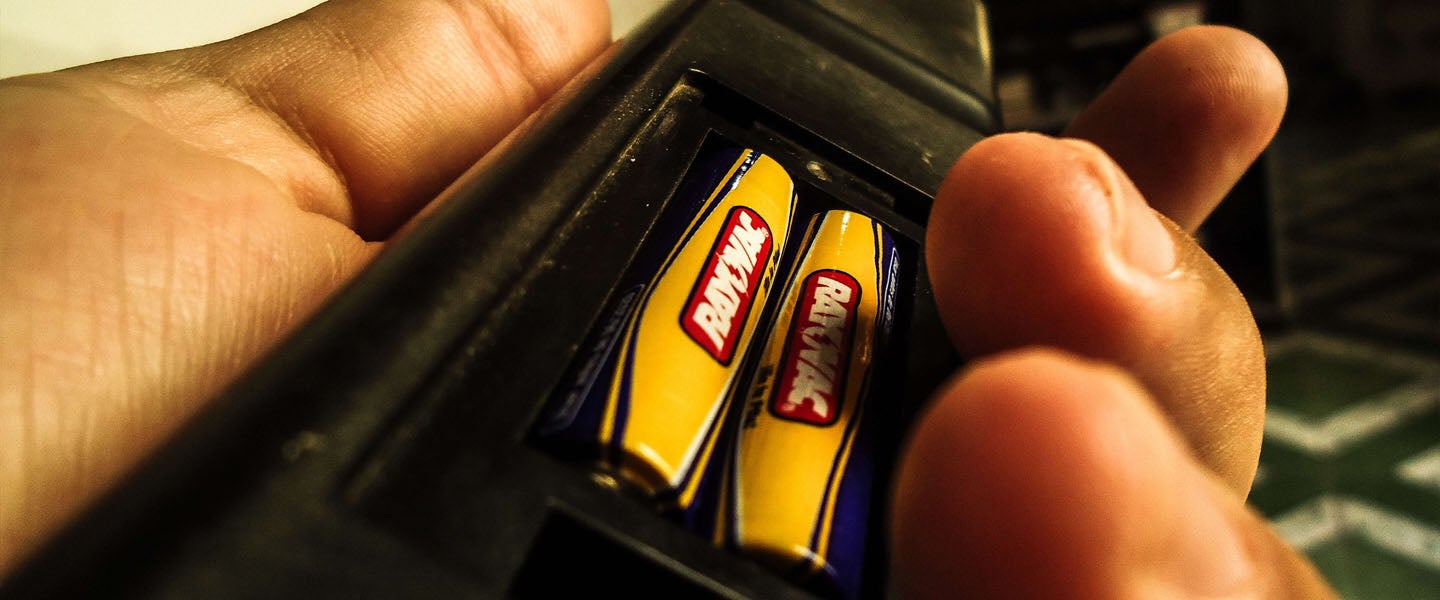Battery scientists do the extremely important work of figuring out sustainable ways to store energy to make things last longer, help protect people during natural disasters and basically ensure the planet can keep functioning. I do the extremely important work of disrupting that essential research by emailing them to ask how the batteries in my remote control I use to watch trash reality TV work. Namely, how come they stop working, and how come they work again when I roll them around?
More simply: Fuckin’ batteries, how do they work?
Unfortunately, none of the big shots over at CalTech or MIT gave me the time of day. Fortunately, batteries aren’t that complicated, and the basic science behind them is widely available. Also, some kind nerds on Reddit were willing to answer my question anyway.
The main functional parts of an alkaline battery, like the ones you probably use at home, are the cathode, anode and electrolyte, housed in a metal canister (typically steel). When a battery is placed into a device like your TV remote, an electrical circuit is completed (think waaaay back to your seventh-grade science class). When the electrical circuit is closed, electrons build up in the anode of the battery, causing an imbalance between the anode and cathode. Now, when a battery isn’t plugged into anything, there’s no way for the electrons of the anode to reach the cathode from inside the battery. But in an electrical circuit, the electrons can be rerouted to the cathode from outside the battery. This transfer of electrons is what allows our electronics to work.
On second thought, this image from Northwestern University’s Qualitative Reasoning Group website is much easier to understand:
Still, that still doesn’t explain why rolling the batteries around causes them to spring back to life after they seem to expire, so to answer that part, we’ve gotta turn back to the chemistry of the battery, and specifically, what happens when they stop working. Cathodes and anodes are comprised of a combination of zinc, high-density manganese dioxide and potassium hydroxide. When electricity is being produced, the anode and cathode interact with the ions of the electrolyte, or potassium hydroxide. This causes the manganese dioxide of the cathode to be reduced, and the zinc anode becomes oxidized. Eventually, the battery uses up its chemicals and can no longer produce the electrons to generate electricity. As Bob, a terse representative from Energizer batteries, succinctly puts it, “The electrolyte in a battery will lose its power.”
BUUUUT here’s the kicker: According to u/chiclet_fanboi, a material science student who answered my cries for help on Reddit, in addition to the chemical reactions that are supposed to happen in a battery, the metal of the battery can oxidize, as well. This may cause an oxide layer to develop on the battery, which prevents the electrons from traveling the circuit. So when you roll the batteries around or take them out and put them back in, you’re actually just removing part of that oxide layer, allowing the electrons to move again. Others theorize that moving the batteries around works because you’re moving the chemicals around, introducing them to the last bits of electrolyte left in the battery.
So there it is, folks: Your batteries are basically just like, dirty with air. Give em’ a good rub and they should come back to life. Just like you and me!

